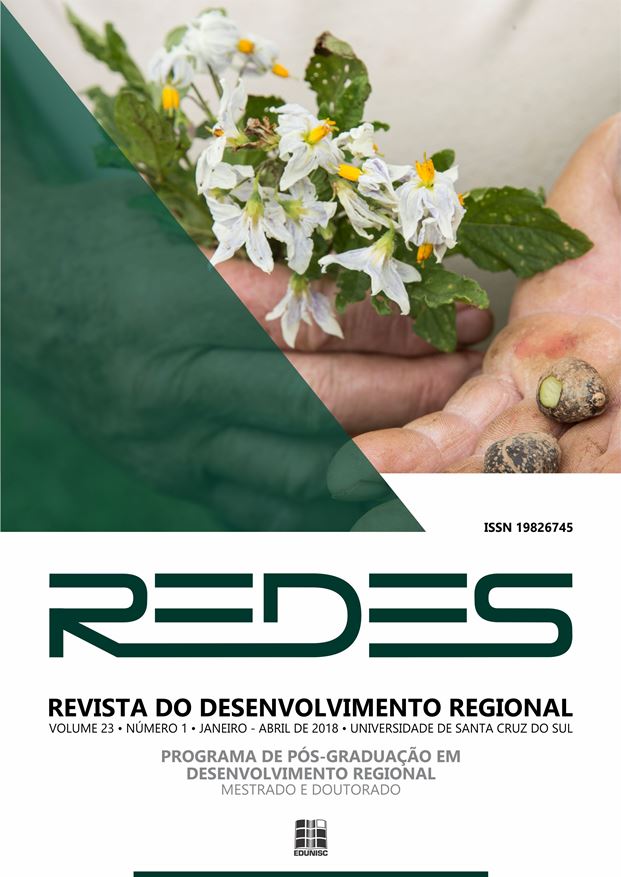Distribuição de Sistemas Agroflorestais no Estado De São Paulo: apontamentos para restauração florestal e produção sustentável
DOI:
https://doi.org/10.17058/redes.v23i1.8735Palavras-chave:
Análise espacial. SAFs. Censo agropecuário. Paisagem rural. Políticas públicas. Agricultura familiar.Resumo
Este trabalho teve como principal objetivo uma análise descritiva da distribuição espacial de sistemas agroflorestais no Estado de São Paulo, a partir de informações disponibilizadas pelo Censo Agropecuário de 2006. Partindo-se da distribuição apresentada por esses sistemas, buscamos discutir sua adoção e relação com o uso do solo em diferentes regiões, bem como discorrer sobre seu potencial como sistemas de produção e de restauração em áreas protegidas na paisagem rural do estado. Os resultados apontam uso incipiente dos Sistemas Agroflorestais à época do levantamento, e concentração dos mesmos em regiões específicas, com destaque a alguns municípios. Isso provavelmente está associado à concentração de assentamentos rurais e pequenas propriedades, à adequação de áreas de preservação permanente e reservas legais e ao interesse na implantação de modelos agroflorestais de produção com algumas espécies (principalmente exóticas) em particular.Downloads
Os dados de download ainda não estão disponíveis.
Downloads
Publicado
2018-01-19
Edição
Seção
Desenvolvimento Rural no contexto do Desenvolvimento Regional: avanços e retrocessos no Brasil recente
Licença
A submissão de originais para este periódico implica na transferência, pelos autores, dos direitos de publicação impressa e digital. Os direitos autorais para os artigos publicados são do autor, com direitos do periódico sobre a primeira publicação. Os autores somente poderão utilizar os mesmos resultados em outras publicações indicando claramente este periódico como o meio da publicação original. Em virtude de sermos um periódico de acesso aberto, permite-se o uso gratuito dos artigos em aplicações educacionais e científicas desde que citada a fonte conforme a licença CC-BY da Creative Commons. Creative Commons Atribuição 4.0 Internacional.
Creative Commons Atribuição 4.0 Internacional.
Como Citar
Distribuição de Sistemas Agroflorestais no Estado De São Paulo: apontamentos para restauração florestal e produção sustentável. (2018). Redes, 23(1), 111-132. https://doi.org/10.17058/redes.v23i1.8735



